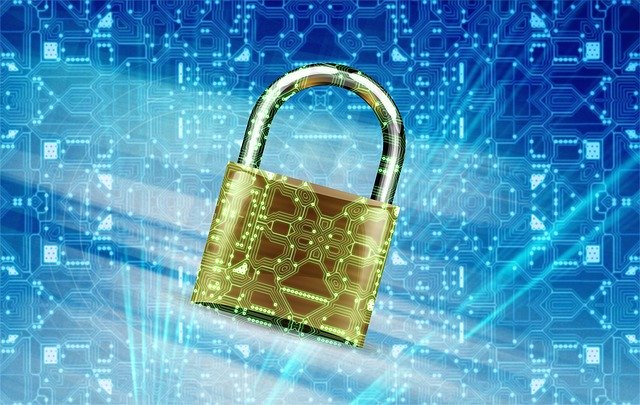Why a qualified electronic signature doesn’t work in Poland

My self-isolation time due to the pandemic is officially over. I have spent it productively. In fact, maybe even too much productively as I haven’t been so tired for a long time. But I learnt a lot. Among others, that EU qualified electronic signature (QES) simply does not work in Poland. And it would seem like such a cool and practical idea for a pandemic time, right? You sign a contract with a pen, and your client or contractor with a qualified electronic signature. Then, you both exchange your signed copies and that’s it. After all, Article 11(1) 781 § 2 of the Civil Code leaves no doubt: a declaration of intent made in electronic form with a qualified signature replaces a declaration of intent bearing a signature submitted with a pen. Unfortunately. It’s not so good as it sounds.

QUALIFIED ELECTRONIC SIGNATURE – WHAT IT IS?
Let’s start with what a qualified electronic signature really is. First of all, the name itself is misleading. After hearing the “signature” most of us automatically think about something graphic. You know, something like a print screen of a photo of a handwritten signature copy- pasted into a pdf file. Or at least a sort of a signature on a tablet or a biometric signature, which I have already written about before.
Nothing along those lines. A qualified electronic signature is not a biometric signature, and it is connected with a handwritten signature only by the word “signature.”
The truth is that a qualified electronic signature is a string of electronic data.
And this date cannot be accidental as firstly, they must comply with the requirements of regulation (EU) No 910/2014 of the European Parliament and of the Council of 23 July 2014 on electronic identification and trust services for electronic transactions in the internal market and repealing Directive 1999/93/EC (so-called eIDAS regulation). Secondly, you must sign with such a signature using a qualified electronic signature creation device (QSCD). Thirdly, such a signature must be based on a qualified electronic signature certificate issued by a trusted, certified qualified signature service providers in the European Union.
ALL THESE QES FRILLS ARE EU’S IDEA
A qualified electronic signature (QES) is EU’s idea.
In other parts of the world, you will not necessarily encounter an immediate understanding for a need of additional electronic signature certification.
But the idea of the eIDAS regulation is based on a rational thinking: to ensure electronic commercial transactions in UE are as safe as possible.
As part of transparency and protection for participants of electronic commercial transactions within EU, the European Commission maintains a list of trusted, certified, qualified signature service providers from each Member State who meet the requirements of the eIDAS regulation and are able to issue a qualified electronic signature for you. You can have a look at this list here. Now, you only need to buy a qualified signature ( and you do not need to be an UE citizen or an UE based company to do this ) and you are able to sign contracts and other documents with your brand new QES. It is meant to be valid in all EU countries replacing the handwritten signature. Seems simple and convenient. But not entirely.

QUALIFIED ELECTRONIC SIGNATURE REPLACES HANDWRITTEN ONE
Theoretically, you might think that such a qualified electronic signature will replace handwritten one in any situation.
After all Article 25 point 2 of eIDAS regulation clearly states that: “ a qualified electronic signature shall have the equivalent legal effect of a handwritten signature”.
And provisions of EU regulations apply directly to all member states, including Poland.
In addition, the art. 781 § 2 of Polish Civil Code confirms hat
“A declaration of intent made in electronic form is equivalent to a declaration of intent made in writing.”
So everything matches apparently.
YES, BUT IN POLAND – REALLY NOT
Not really. The point is how most Polish lawyers interpret the the this article 781 § 2 of Polish Civil Code.
If a qualified electronic signature is equivalent to a handwritten signature, the fact that one party has signed electronically and the other with a pen shouldn’t matter, right?
Unfortunately, the overwhelming majority of lawyers in Poland (i.e. read: also the courts) say that such a “hybrid” exchange of signatures is impossible.
Why?

.
QUALIFIED ELECTRONIC SIGNATURE OR HOW TO SAY “NO” TO FUNCTIONALITY AND PRACTICAL THINKING
The provisions of Polish Civil Code establishes 2 main forms of a legal act : a written one in art. 78 and an electronic one in art 781. As you remember the provision stating that: “a declaration of intent made in electronic form is equivalent to a declaration of intent made in writing” is written in art. 781 § 2 of Polish Civil Code. Which means it is placed in the article 781 regulating the electronic form of legal acts.
And this the reason why most Polish lawyers says that you cannot conclude a contract in a hybrid form i.e. exchanging copies of the same contract when 1 part signs it handwritten and the other using its qualified electronic signature.
Why? Because in their opinion, you will not execute the contract either in the writing or in the electronic form.
According to the majority of Polish lawyers, including experts on Polish Civil Code, since the provision on electronic and written declaration of intent equivalence was placed as § 2 of art. 78 1 regulating the electronic form of a legal act, that means it refers exclusively to this very form.
Frankly speaking , this interpretation is very literal and “safe”, so to speak. However I do not support it as in my opinion it’s extremely impractical, outdated and simply blocks the digitization of trade and commercial transactions in Poland.
I believe that this line of interpretation is caused only due to conservatism of the expects on Polish civil law and some kind of mental resistance to technical progress combined with a typically Polish lack of trust. I think that may Polish legals ( including the judges) still think that after all there is nothing as certain as a handwritten signature.
Besides, why one would propose some functional and practical interpretations while it’s possible to interpret literally and safely, right? Let’s be honest, one typically expects that the court will also rather interpret it safely, right?
The result of this interpretation is that contracts executed in electronic form are still rare in Poland. A qualified electronic signature costs money plus one still has to break a psychological barrier to start using it. The question is why would you spend your money on QES if you can use it only when your client or contractor has it ? Truly a handwritten signature on a paper sheet is much cheaper and looks way more convenient.
What’s more this interpretation of also very effectively, hinders the development of electronic transactions between Polish and UE companies and entrepreneurs. It simply doesn’t pay off for a Polish company to have a qualified electronic signature and they do not obtain QES. As a result even if their European partners have it, still Polish companies and entrepreneurs will insist on executing paper contracts with old, good handwritten signature.
Honestly, I find it funny and sad at the same time that we think in Poland and Euorpe about copyrights or liability for artificial intelligence’s errors, and a simple electronic qualified signature capitulates against the mental barrier of law interpreters.
Isn’t this bizarre?
Regards, Prawstoria




